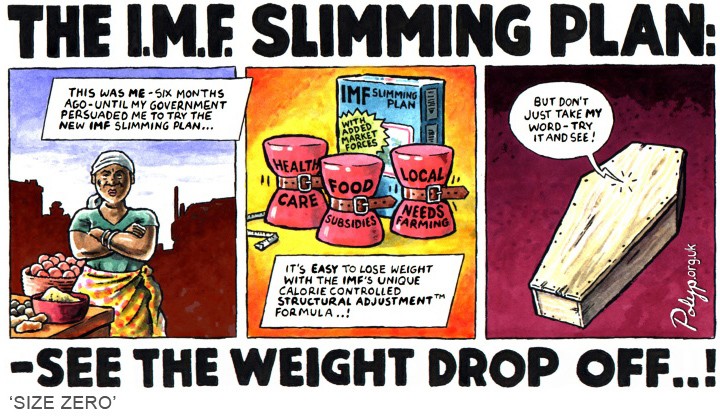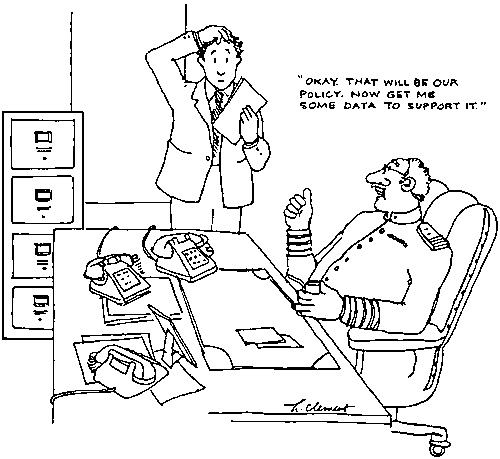Structural Adjustment Program
Post on: 19 Май, 2015 No Comment

Structural Adjustment Policies are economic policies which countries must follow in order to qualify for new World Bank and International Monetary Fund (IMF) loans and help them make debt repayments on the older debts owed to commercial banks, governments and the World Bank. Although SAPs are designed for individual countries but have common guiding principles and features which include export-led growth; privatisation and liberalisation; and the efficiency of the free market.
SAPs generally require countries to devalue their currencies against the dollar; lift import and export restrictions; balance their budgets and not overspend; and remove price controls and state subsidies.
Devaluation makes their goods cheaper for foreigners to buy and theoretically makes foreign imports more expensive. In principle it should make the country wary of buying expensive foreign equipment. In practice, however, the IMF actually disrupts this by rewarding the country with a large foreign currency loan that encourages it to purchase imports.
Balancing national budgets can be done by raising taxes, which the IMF frowns upon, or by cutting government spending, which it definitely recommends. As a result, SAPs often result in deep cuts in programmes like education, health and social care, and the removal of subsidies designed to control the price of basics such as food and milk. So SAPs hurt the poor most, because they depend heavily on these services and subsidies.
SAPs encourage countries to focus on the production and export of primary commodities such as cocoa and coffee to earn foreign exchange. But these commodities have notoriously erratic prices subject to the whims of global markets which can depress prices just when countries have invested in these so-called ‘cash crops’.
By devaluing the currency and simultaneously removing price controls, the immediate effect of a SAP is generally to hike prices up three or four times, increasing poverty to such an extent that riots are a frequent result.

The term Structural Adjustment Program has gained such a negative connotation that the World Bank and IMF launched a new initiative, the Poverty Reduction Strategy Initiative, and makes countries develop Poverty Reduction Strategy Papers (PRSP). While the name has changed, with PRSPs, the World Bank is still forcing countries to adopt the same types of policies as SAPs.
For more information on SAPs, read SAPRIN’s report, The Policy Roots of Economic Crisis and Poverty , a four-year, multi- country participatory investigation into the effects of specific structural adjustment policies on a broad range of economic and social sectors and population groups.
In the dozens of countries where the International Monetary Fund (IMF) and World Bank have imposed structural adjustment programs (SAPs), the people who have seen deterioration in their standards of living, reduced access to public services, devastated environments, and plummeting employment prospects have not been passive. The pages of newspapers, magazines, and academic journals (those that can survive in depressed economies) been filled with damning analysis of structural adjustment. More important, people have been organizing to combat the pillaging of their lands and livelihoods. This organizing has resulted in mass movements and protests on every continent, but they are not often reported on in the mainstream press.














